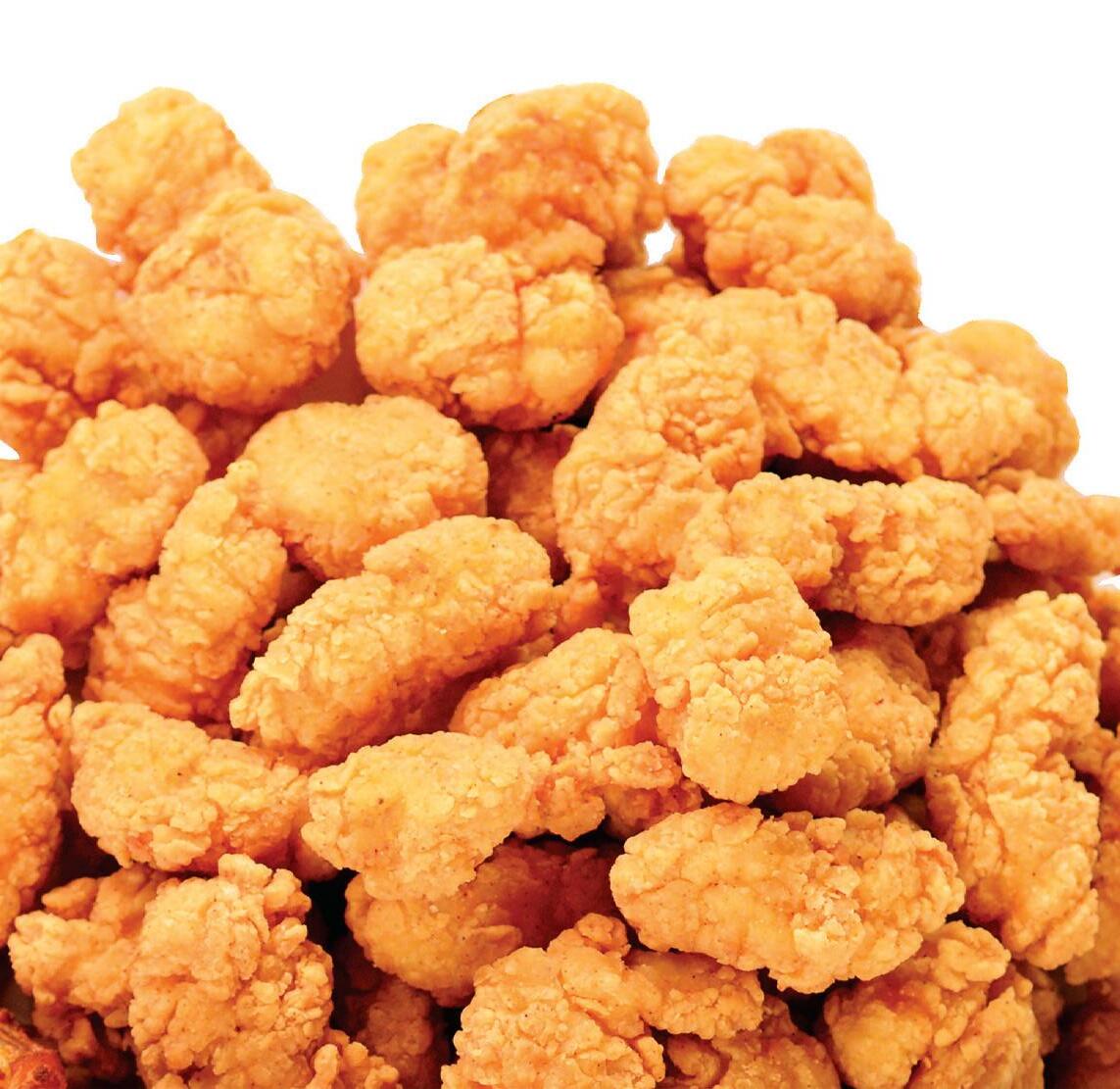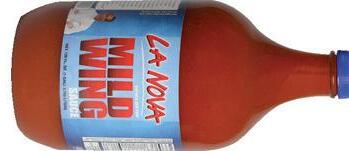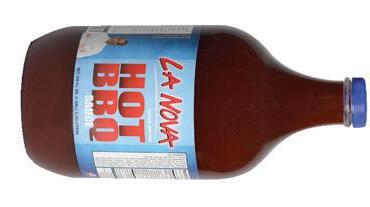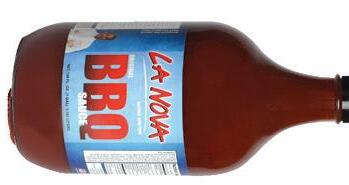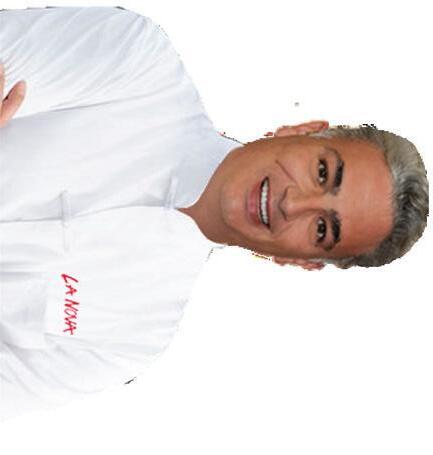








Bellissimo Meatballs are made in the finest Italian tradition. The classic recipe has a blend of premium quality beef and pork, the finest Italian cheeses, fragrant Italian spices and real bread crumbs. There’s also a flavor-filled all-beef option.
Fully cooked and available in a variety of sizes and styles, the meatballs are tender and delicious –bursting with juicy flavor! In the back of the house,
you will appreciate the convenience and the cost savings in both prep time and labor.
For your customers, Bellissimo Meatballs have a homemade look and feel and can be served as appetizers, in sandwiches or with a favorite pasta dish. Bellissimo Meatballs will inspire creativity in your kitchen and motivate customers to keep coming back for more.
Bellissimo distributors are the exclusive source for Bellissimo Meatballs. Contact a representative for availability and pricing.
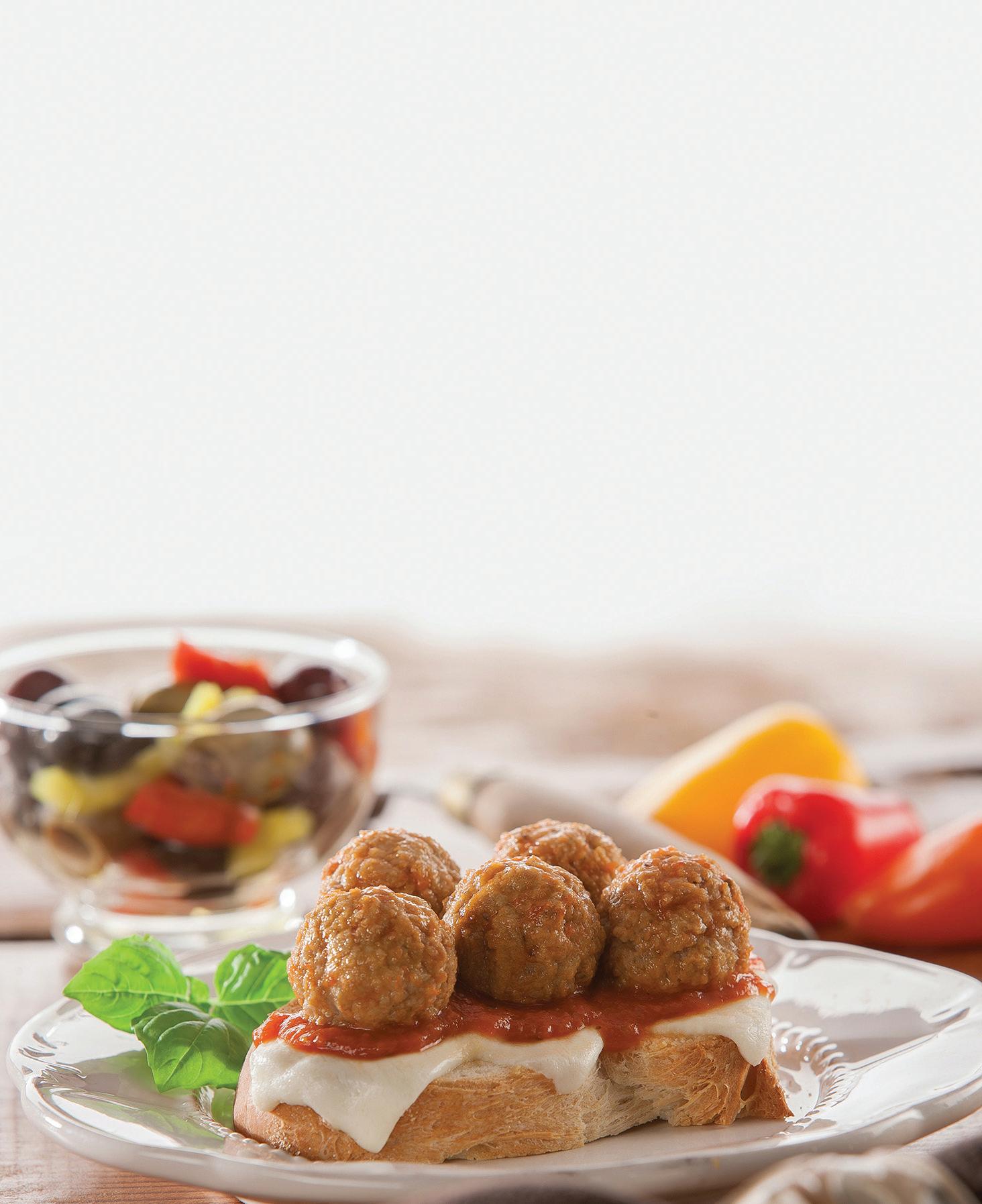
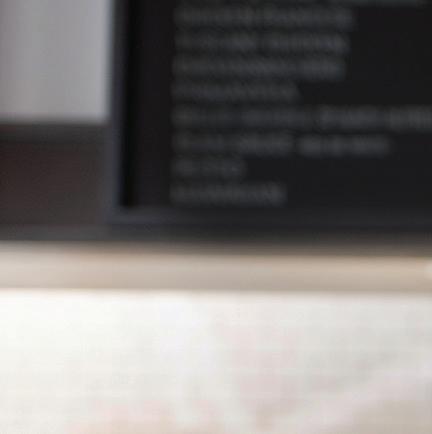
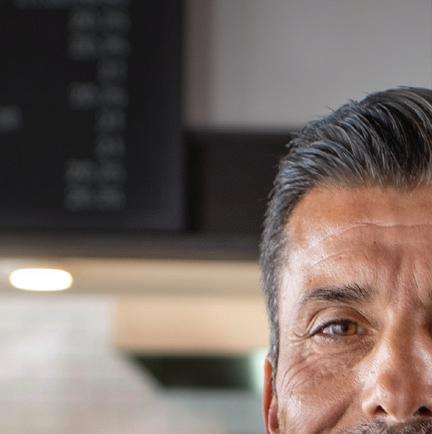
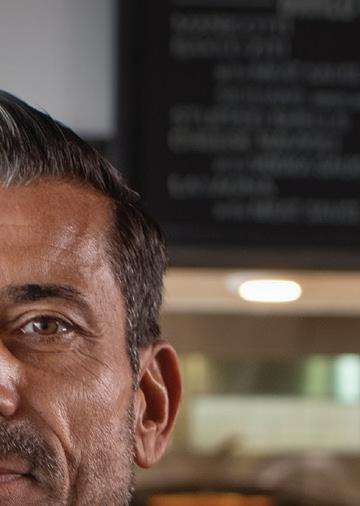




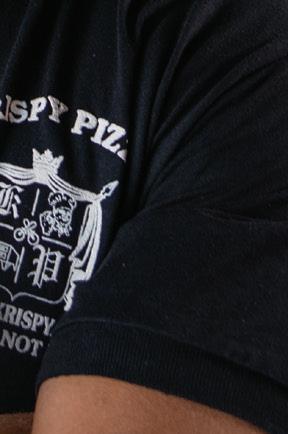


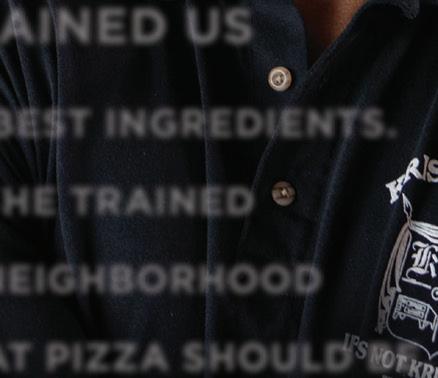
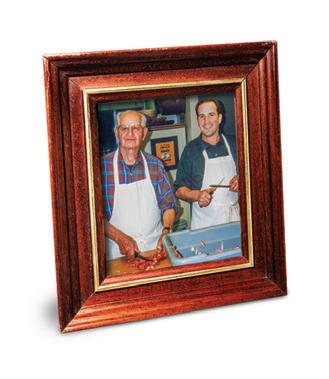
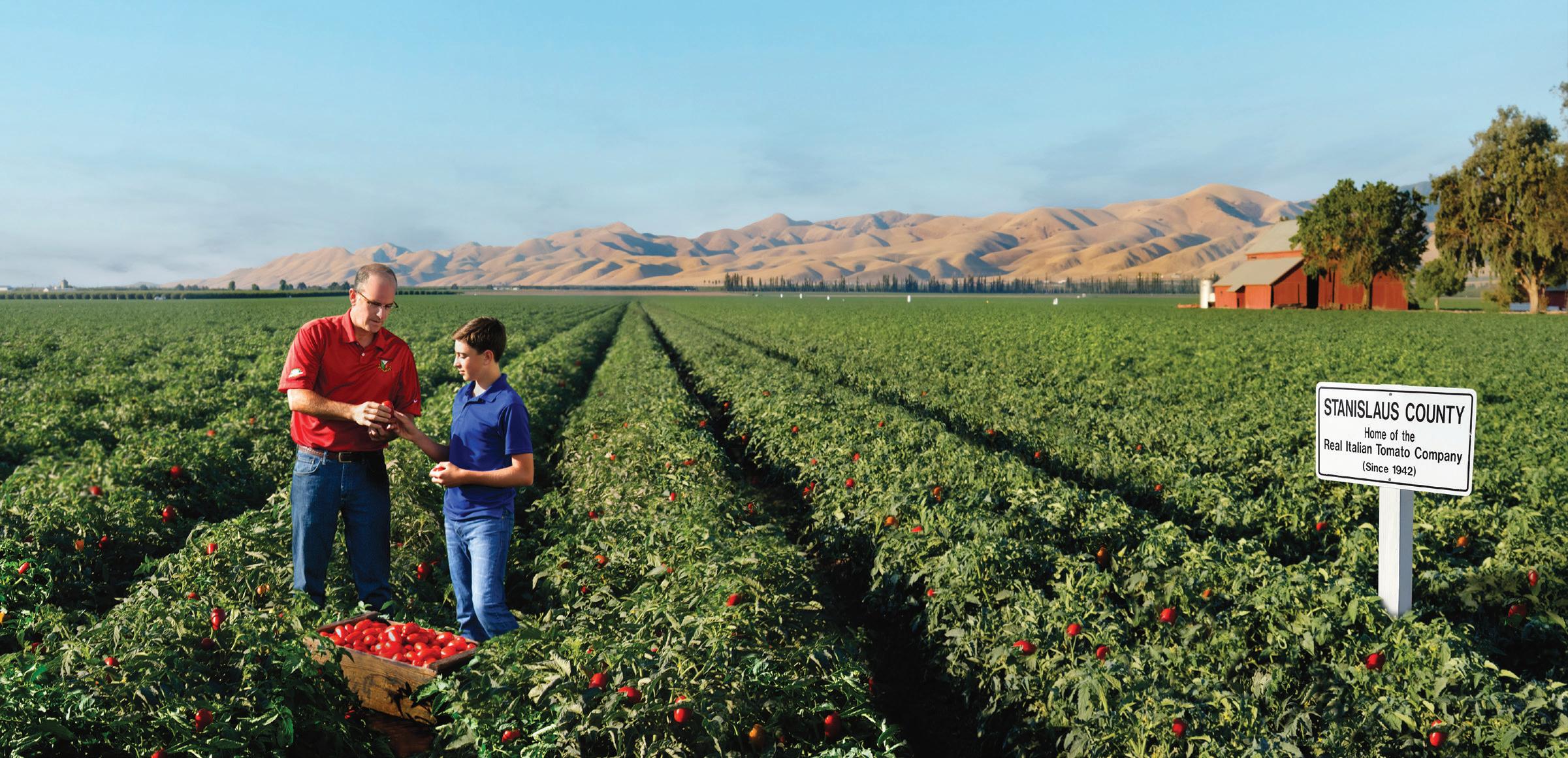








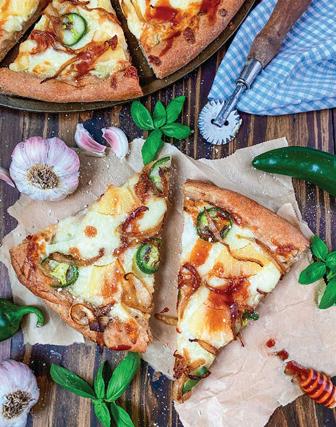

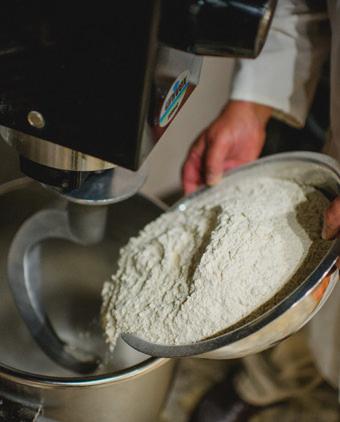


































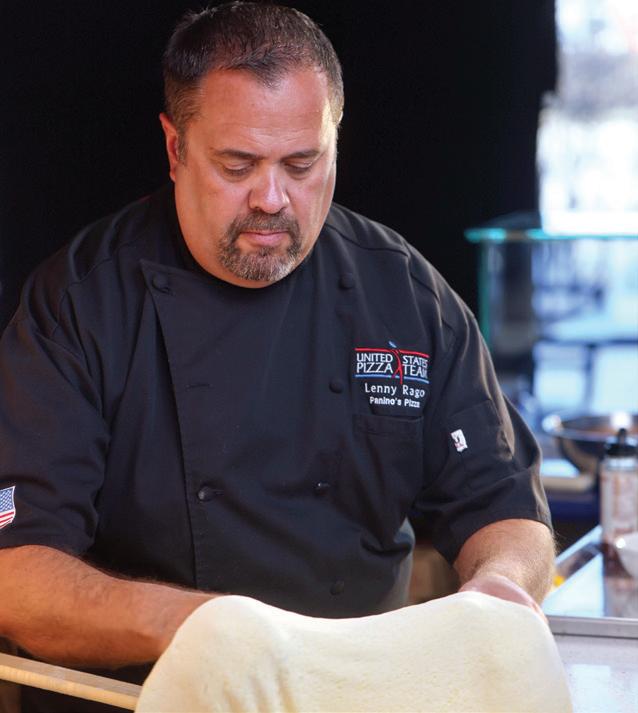

The robots at Pazzi can build, bake and box as many as 80 pizzas an hour, with very little help from their human overlords.

pmq.com/pazzi-paris
A Durham, North Carolina, pizzeria adopted a new model to boost pay for back-of-house workers, but that strategy has failed for some restaurateurs.
pmq.com/living-wage-fee
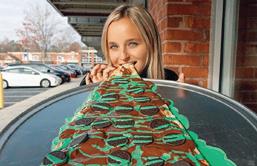

Partnering with social media micro influencers can raise your restaurant’s profile without busting your marketing budget.
pmq.com/micro-influencers
Instead of treating employees like hired hands, treat them like internal customers and make sure they feel just as satisfied as your paying customers.
pmq.com/restaurant-employee-satisfaction


Would you name your next pizza shop Master of My Doughmain or Pizzarrhea? If those don’t work for you, we’ve got 31 more suggestions.
pmq.com/weird-pizzeria-names
In this exclusive video, Bill Rogers of Culinary-TV talks with Michael Affinito, the owner of two food trucks in Onondaga County, New York.

pmq.com/via-napoli-express
Inc.
662-234-5481
Volume 25, Issue 6
August 2021
ISSN 1937-5263
PUBLISHER
Steve Green, sg@pmq.com ext. 123
CO-PUBLISHER
Linda Green, linda.pmq@gmail.com ext. 121
EDITOR IN CHIEF
Rick Hynum, rick@pmq.com
ART DIRECTOR
Eric Summers, eric@pmq.com
SENIOR COPY EDITOR
Tracy Morin, tracy@pmq.com
IT DIRECTOR
Cory Coward, cory@pmq.com ext. 133
DIRECTOR OF RESEARCH
Blake Harris, blake@pmq.com ext. 136
TEST CHEF/USPT COORDINATOR
Brian Hernandez, brian@pmq.com ext. 129
FOOD PHOTOGRAPHER
David Fischer, david@pmq.com
CHIEF FINANCIAL OFFICER
Shawn Brown, shawn@pmq.com
ADVERTISING
SALES DIRECTOR
Linda Green, linda.pmq@gmail.com ext. 121
SENIOR ACCOUNT EXECUTIVE
Tom Boyles, tom@pmq.com ext. 122
SALES ASSISTANT
Brandy Pinion, brandy@pmq.com ext. 127
PMQ INTERNATIONAL
PMQ CHINA
Yvonne Liu, yvonne@pmq.com
PMQ RUSSIA
Vladimir Davydov, vladimir@pmq.com
PMQ PIZZA MAGAZINE 605 Edison St. • Oxford, MS 38655 662.234.5481 • 662.234.0665 Fax
PMQ Pizza Magazine (ISSN #1937-5263) is published 10 times per year.
Cost of U.S. subscription is $25 per year. International $35. Periodical postage pricing paid at Oxford, MS. Additional mailing offices at Bolingbrook, IL. Postmaster: Send address changes to: PMQ Pizza Magazine, PO Box 9, Cedar Rapids, IA 52406-9953.
Opinions expressed by the editors and contributing writers are strictly their own, and are not necessarily those of the advertisers. All rights reserved. No portion of PMQ may be reproduced in whole or part without written consent.

August 7-8
The Louisiana Restaurant Association Showcase
Nobody needs an excuse for a getaway to New Orleans, but here’s a good one anyway. This two-day marketplace for restaurant and foodservice professionals is the largest and most attended show of its kind in the region! Learn more at lra.org
August 17-19
International Pizza Expo
The International Pizza Expo takes place at the Las Vegas Convention Center and features keynote speakers from across the industry, cooking demos, workshops and the new International Italian Sandwich Championship. Learn more at pizzaexpo.com
August 26-28
The NAFEM Show 2021
Taking place at the Orange County Convention Center in Orlando, NAFEM features a wide array of products for food preparation, cooking, storage and table service. This event brings the industry’s best and brightest together to spark foodservice success.
October 22-26
HostMilano International Hospitality Exposition
HostMilano returns as a live, in-person event in Milan. With more than 1,000 exhibitors from 40 countries already signed up and 800plus events for restaurant and foodservice operators, this one is a worldwide can’t-miss!

August: National Sandwich Month
We have John Montagu (the 4th Earl of Sandwich) to thank for popularizing the sandwich. Like pizza, it’s the perfect blank canvas for culinary innovation, so develop a special menu and promote it with mouthwatering photos on social media.
August 3
National IPA Beer Day
Help your customers explore the possibilities of IPA brews. Consider offering a selection of craft IPAs paired with your pizzas or collaborate with a local brewery to cross-promote this beer lovers’ holiday.

August 20
National Bacon Lovers Day
Get your bacon shakin’ with pizzas featuring the popular pork that pops with salty goodness. Wow your guests with a bacon-wrapped specialty pie or pair bacon with toppings like mushrooms, olives, onions and tomatoes.
2 p.m. August 10
PMQ Marketing Masters
PMQ publisher Steve Green talks to Alena Tikhova, former owner of Dodo Pizza and current chief marketing officer for XRobotics in San Francisco, to get the latest updates on robotics and the pizza industry. Join us on Facebook Live!
2 p.m., September 1
PMQ Live Update: Michael Kalanty
PMQ’s Brian Hernandez talks to sourdough master Michael Kalanty, author of How to Bake Bread and How to Bake More Bread, about making prebiotic bread for improved gut health—how to make it happen and taste great! Join us on Facebook Live!
Fall is almost upon us, with cooler weather, football and moneymaking opportunities on the way. Here’s a look at upcoming events you won’t want to miss, plus some special food and beverage holidays and PMQ’s latest live interviews with industry leaders!
Cuochi (Professional Chefs Association). Meanwhile, current events and future trends will be the focus of Design Talks, offering professional updates on highly topical issues in the professional hospitality and design sectors.
Top exhibitors from around the globe will be represented at HostMilano this year, including Gruppo Cimbali, Simonelli Group, Hausbrandt, Gruppo Ima, Pregel, Babbi, Imperia & Monferrina, Tagliavini, Ali Group and many others. International companies include Welbilt, Hobart, Salva, Wiesheu, Josè Julio Jordao, Valmar Global and WMF Group, to name a few.





To learn more about this global hospitality event, visit the HostMilano website at https:// host.fieramilano.it.

The new server at Angelo’s Palace Pizza doesn’t smile or make small talk, but customers still find her irresistible—and so does the news media. Since starting her new job at the Cumberland, Rhode Island, pizza shop, Servi, a food-running robot from Bear Robotics, has made an impact with her efficiency and work ethic while freeing up Angelo’s human employees to spend more time with the guests. She has also become a media darling, attracting positive coverage from TV news outlets across the region. Equipped with three compartments for food and drinks, Servi has been programmed to know the layout of the restaurant and every table number. Once an employee punches the table number into her system, Servi glides over with the order and greets the customers in a female voice. “She knows the space,” Angelo’s co-owner, Alexandria Kitsilis, told one TV reporter. “She senses people, she waits, she backs up. It’s pretty cool.” Another Bear Robotics food bot, called Penny, has served customers at an Amici’s Pizza location in Mountain View, California, while a Sergio’s Restaurant location in Miami is using a bot called ASTRO. According to one news report, Servi costs Angelo’s only about $1,000 per month—not bad for an employee that never gets tired and doesn’t expect a tip.



Restaurateur Geno McWilliams, a member of the U.S. Pizza Team, partnered with the Food Network and the nonprofit No Kid Hungry to combat food insecurity at his ghost kitchen, Kitchens Unlimited, last spring. Kitchens Unlimited, which opened in the fall of 2020 in Effingham, Illinois, offered a free half cheesesteak sandwich and one slice of pizza to anyone under the age of 18, while older individuals paid for their pizza slices, cheesesteaks and Chicago-style hot dogs, with proceeds going to No Kid Hungry. Kitchens Unlimited is home to Lucia’s Italian Kitchen, Geno’s Grill and Southern Illinois Burger Company, all of which share a common space to prepare their carryout and delivery fare. “The simple fact of a child going hungry is quite disturbing to me,” McWilliams said. “No Kid Hungry is an amazing organization that is fighting to try and end kid hunger in America. These events are a ton of fun. All the kids got to see our big pizza oven and see us prepare their food. I even had some tell me, ‘Hey, I follow you on Instagram!’”


Chef Pasquale Presa, owner of Pasquale’s Neighborhood Pizzeria in Rochester, Minnesota, knew he wanted to expand his store back in early 2020, but when the pandemic hit, the timing seemed lousy—at first. Turning a crisis into an opportunity, he cut a deal with a local grocery, Hy-Vee Crossroads, which began selling his private-label frozen pizzas—first at just one location, but eventually at seven stores. “Soon, we were keeping all of our employees busy making frozen pizzas,” Presa told the Post-Bulletin last May. “From May [2020] to May [2021], we sold 75,000 crusts.” He went on to partner with several “co-packers,” companies that produce branded products like his frozen pizzas. Next thing he knew, he had created an entire retail division “while still staying true to our authentic experience of New York-style pizza right here in Rochester,” he said. He also offers Pasquale’s-branded sauces, cheeses, tomatoes and spices—even pizza pans—all packaged for sale, both in his store and on grocery shelves around the region. Coming soon: Pasquale’s Olive Oil, made from olives harvested from his family’s ancient groves in Italy. “COVID-19 taught me to diversify,” he told the Post-Bulletin. “We came out [of the pandemic] much more secure, much more sound, much more bulletproof.”



When Melissa Pellegrino and Matt Scialabba, the owners of Bufalina, got their hands on a vintage Volkwagen bus recently, they knew they didn’t want to turn it into yet another run-of-the-mill food truck for their fans in Guilford, Connecticut. They had a better idea: They converted it into Bar Bufalina. “We came up with the idea of doing this little mobile bar out there,” Pellegrino told the New Haven Register. “And we decided to do it Italian-style, with some small plates and Italian-inspired cocktails.” Parked on their restaurant’s patio, the white and turquoise bus has marble countertops and enough space for two or three employees. Bar Bufalina’s small plates feature seasonal ingredients and have included zucchini involtini with herb salsa and a shrimp salad served in Bibb lettuce cups. Meanwhile, thirsty guests can order four Prosecco-based spritz cocktails made with a variety of liqueurs—think sour cherry gin and sweet vermouth—as well as several craft drinks, all for $10 to $12. Bufalina’s pizza menu is equally eclectic, with one spring-themed weekend special featuring a ramp salsa verde, roasted ramps with pickled mustard seeds, fresh mozz and applewood-smoked bacon. The signature Dandelion pizza is topped with wilted dandelion greens, buffalo mozz, sausage and a red onion-Calabrian chili jam.


After opening a store every three-and-a-half days in 2020, Marco’s Pizza, with about 1,000 locations in 34 states, aims to become the No. 4 pizza chain in the country, according to Nation’s Restaurant News (NRN). Currently the sixth-largest pizza company, Marco’s, which experienced 26 straight weeks of positive sales growth last year, has 200 new units in development. The chain is also eyeing Austin, Dallas, Denver, Miami, Orlando, San Antonio and Southern California. Meanwhile, Papa Murphy’s, the No. 5 pizza chain, and the current No. 4, Papa John’s, had negative store openings in 2020. One strategy for expanding the Marco’s footprint: developing a line of ghost kitchens in Texas and Florida and working with third-party delivery companies in those areas, Steve Seyferth, Marco’s chief experience officer, told NRN “Our brand has traditionally been more on the rural outstretches of cities,” he said. “And these ghost kitchens are mostly being developed inside inner urban areas. It’s been a little more difficult during the pandemic to assess whether ghost kitchens are something that’s going to work and explode for us, or maybe it would be holding us back.”



Just as rock band U2 was ascending to legendary status in the late 1990s behind the riffs of lead guitarist The Edge, Pizza Hut debuted a tavern-style pizza by the same name. The thin-crust specialty pizza returned this spring for a limited time as Pizza Hut continued to shake up its menu in a bid for higher sales. The Edge, which debuted in 1997, was a customer favorite, but it has resurfaced only occasionally on the chain’s menu. It’s sliced into 16 squares and comes on a cracker-thin crust that’s sturdy enough to hold plenty of toppings packed all the way to the edge. Varieties of The Edge include The Ultimate (pepperoni, Italian sausage, green peppers, onions and tomatoes); the Carnivore (pepperoni, ham, Italian sausage and bacon); the Vegetarian (green peppers, onions, mushrooms and tomatoes); and the Pepperoni Lovers (lots and lots of pepperoni). Writing for Delish. com, Ni’Kesia Pannell praised The Edge as “undeniably one of the best things that [Pizza Hut] has ever dropped.” Pizza Hut general manager David Graves said The Edge, which sells for $12.99, “is a pizza our customers constantly ask us to bring back.”







On the heels of its partnership with burger brand Red Robin, Columbus, Ohio-based Donatos has teamed up with REEF Kitchens to grow its presence in Nashville—with expansion into other cities nationwide under consideration. REEF specializes in ghost kitchens (officially dubbed “neighborhood kitchens” by REEF) located mostly in urban markets. Donatos currently operates only one brick-and-mortar store in Nashville, so the move will give the brand’s fans a new delivery-only option in Music City. The kitchen will serve neighborhoods in East Nashville, and delivery will be provided by third-party platforms such as Uber Eats, DoorDash, Postmates and Grubhub. “REEF is a scalable way to grow our business through delivery,” said Donatos CEO Tom Krouse. Donatos already uses kitchen space in 117 Red Robin locations to offer pizza delivery, dine-in and pickup. All totaled, Donatos can now be found in 300 locations around



Grain Craft and Shepherd’s Grain have proudly come together to offer a wide selection of premium pizza flours. With a focus on quality and consistencyalong with a commitment to the long-term health of our land - your pizza will always rise above the rest.


A shared passion for positive change.
graincraft.com
shepherdsgrain.com

(Pizza Expo booth 1153) (Pizza Expo booth 1259)


If you’re attending Pizza Expo in Las Vegas August 17-19, make sure to visit our advertisers’ booths and get moneymaking ideas to boost your sales and profits!
• Arrow POS Booth #935
• AM Manufacturing Company Booth #1441
• Bag Solutions Booth #1075
• Bellissimo Foods Booth #641
• California Milk Advisory Board Booth #1573
• Caputo Cheese USA Booth #661
• DeIorio’s Foods Booth #1855
• Edge Ovens Booth #1067
• Fish Oven & Equipment Corp. Booth #1069
• Galbani Professionale Cheese Booth #1131
• GI Metal USA Booth #1173
• Grain Craft Booth #1153
• Grande Cheese Company Booth #435
• HTH Inc. Booth #943
• HungerRush Booth #1227
• Message On Hold Booth #745
• LloydPans Booth #1539
• MailShark Booth #1436
• Melinda’s Foods Booth #1766
• MFG Tray Booth #455
• Mike’s Hot Honey Booth #862
• Neil Jones Food Company Booth #1349
• Pacific Coast Producers Booth #1325
• PDQ Signature Systems Booth #427
• Peerless Ovens Booth #1061
• Pizza Cloud Booth #841
• Pizza Solutions Booth #1065
• Portion PadL Booth #825
• Rich’s Products Booth #1367
• Revel Systems Booth #729
• Smithfield Foods Booth #635
• Somerset Industries Booth #1353
• Stanislaus Food Products Booth #441
• Stella’s Gourmet Pizza Dessert Booth #1839
• Thrive POS by Granbury Booth #827
• Thunderbird Food Machinery Booth #1866
• VEDGEco USA Booth #354
• WestRock Booth #847
• WoodStone Corporation Booth #773
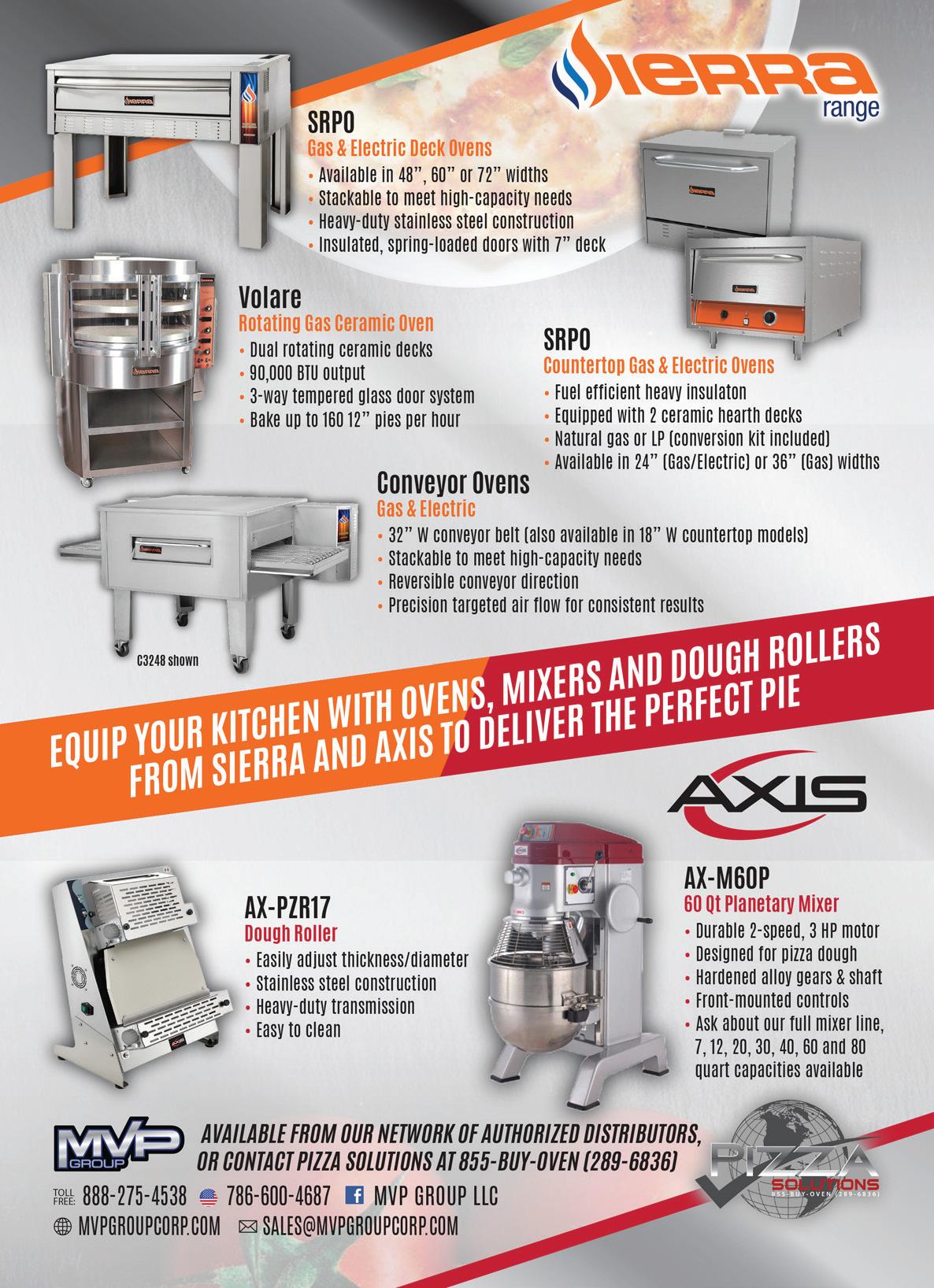
To respect confidentiality, the name of the franchise cannot be disclosed.
Challenges:
• Shortage of skilled labor
• Lack of product consistency
• Food waste costs through the roof
• Increased customer demands for quality
• Serving customer in a timely fashion
Goals:
• Increase capacity to sell during peak periods
• Keep up with third-party apps demand
• Increase revenue stream without adding staff
• Cut food costs
• Decrease reliance on employees
Results:
• From 5% to 28% increase in weekly sales
• Over 6% hike in overall satisfaction scores
• Over 4% increase in food quality scores
• 20% more pizzas without hiring
• No more burnt pizzas
For many decades, a large U.S. pizza franchise has been serving up fresh, stone-baked pizzas to local families and friends. Struck with increasing customer demands, a competitive marketplace, soaring food costs and the lack of qualified labor, the franchise was eager for a solution that would not only address these challenges but also maximize sales and profits.
They decided that adding technology to their baking process would be key to growing the business and attracting new franchisees. Having built their brand around traditional stone-baked pizza, maintaining this quality standard was essential.
After considering many options, the franchise decided to focus on oven technology. According to the founder, there was “no way in the world” they would consider a conveyor oven—until they came across the Hot Rocks stone conveyor oven and quickly realized it would be an asset to their business. The Hot Rocks would integrate authentic stone-baked taste and quality with speed and consistency, ticking off all the requirements the franchise was looking for. They immediately began to transition the Hot Rocks oven to all locations throughout the U.S.
The art of baking is tricky, and removing the human factor was possible by adding a stone conveyor. This enabled the franchise to offer a consistent product, reduce the need for skilled labor and considerably lower food waste, resulting in increased sales and profits and a solid brand image.
Focused on providing the highest quality to customers, it was critical to maintain the crispy crust they would get from baking on stone. Serving customers in a timely manner leads to happy customers and great reviews. The speed of the oven enabled them to cut baking time by over 50% during rush hours. Large orders, third-party apps or a sports team reservation were no longer challenges.
Not only has this franchise successfully addressed its initial challenges with Hot Rocks’ innovative technology, it is also reaping benefits such as increased sales, improved profitability and soaring customer reviews, allowing them to grow their business to the next level.









One ingredient for your dough recipe that is often overlooked is the dough machine it’s mixed in! At Precision Mixers, we know that having a dependable machine is vital to your daily restaurant operation. Whether you need to mix dough or grate cheese, the mixer is a vital tool to your daily operations. With our Precision HD-60 80qt pizza mixer, we offer an industry busting 7-year warranty on all gears and shafts in the planetary and transmission, which includes the complete drive-train from the motor to the attachment shaft where the hook is, and a three-year parts warranty on the motor itself. We want to give owners and operators the relief of not having to worry about the machine breaking down, and if it ever did, knowing that parts would be either covered, available in common electrical or automotive supply stores, or always in stock at our warehouse. But, if you find that the HD-60 is a little too big for your needs, we also offer the Precision HUB-50 pizza mixer as well. All the might of the HD-60 in a smaller machine fit for you. We have a dough machine for all your needs, ranging from 10qt-140qt Planetary mixers, as well as a line of Spiral mixers and dough rounders.
Precision North America is devoted to providing top quality mixers at affordable prices. We are proud to manufacture mixers that look great, work hard, and provide years of uninterrupted service. We stand firmly behind our products, offering the industry’s leading warranties, easy access to parts, and service companies that are staffed with trained technicians to help keep your business working seamlessly. We understand that the purchase of a mixer is a substantial decision for your business and that you have a choice of mixers. Let us show you why Precision mixers are the most sensible, hardworking, and economical choice.
Please contact us with any questions you may have! All of us at Precision North America welcome you and want to help you with your mixing needs.
For more information, you can call us at: 1-877-764-9377, or visit precisionmixers.com






As football season kicks off and orders for tailgate parties and Monday Night Football start to happen, what are you doing to connect with your customers? SMS is great to text deals and announcements directly to your customers’ phones. They say pizza and football go together like turkey and Thanksgiving, right? Well, maybe not. But an SMS/MMS program allows you to immediately reach your customers—football fans or not.

An estimated 96% of Americans own a cellphone, and all cellphones can receive text messages. Research shows that 98% of text messages are read, and 90% of texts are read within only three minutes! You can be confident that your text club subscribers are your customers, and they see your messages.
With an SMS service, consumers don’t need to download an app to receive your text message. Your subscribers have opted in because they like your products and value the content you text them.
SMS is extremely effective because of its excellent engagement rates, and it works hand in hand with your other marketing efforts. Use SMS to send a reminder a few hours before kickoff or when you have a surplus of product to move. Include a Facebook post link in an SMS and drive traffic to engage with your post—perhaps “comment for a chance to win a gift card” or “watch a live video.” Increasing
your Facebook post engagement boosts your organic reach.
Not only is SMS a fun and creative marketing tool, it is costeffective. AGE SMS rates will likely beat other SMS providers, and we do not up-charge for more opt-in methods or keywords. Our platform allows up to 240 characters per SMS message compared to 160 characters for most other providers. Your texts should be catchy yet short and sweet. However, at times, a few extra sentences give you room to include a link or other important details.
When you use SMS in your marketing mix, your messages accomplish better reach, targeting, and return on investment. AGE Media’s SMS/MMS platform will help you “sell more pizza!” The AGE SMS text message marketing platform is easy to manage, and users have the capability to schedule messages, send a photo or an animated GIF, shorten URLs using our built-in Bitly tool, see clickthrough reports, and more.
Now is the time to start growing your text club! If you are already using SMS—great! Show us your last statement, and we will do everything we can do beat your current provider’s rate! We can service a stand-alone pizzeria or a 100+ location chain. Contact us today! To learn more, text PIZZA1 to 72727
Pinsa has a proofing process of 72 hours, no less and no more, according to Biagio Cepollaro of Via Roma.

What sets the light, super-crispy pinsa apart from the average pizza pie? At Via Roma, Italy native and owner Biagio Cepollaro has it down to a science.
 BY BIAGIO CEPOLLARO
BY BIAGIO CEPOLLARO
The pinsa making process at Via Roma is both unique and common in the pinsa world. Common because there are no new elements added to it—it’s simply yeast, water, flour, salt, mixing and rising. That’s it. However, the process is unique, because the flour we use is a special mix of wheat, soy and rice flour. Mix in a little bit of fiber, and you have a special flour that’s rarely used in Italy.
What sets pinsa apart from the classic Italian pizza we see in the United States is not only the flour, but the amount of water. For one kilogram of flour, we add 900 grams of water. This means our dough has a hydration of about 90%, while other pizzas, such as the Neapolitan, do not go higher than a hydration of about 75%. Once the dough is mixed, it’s time to proof.

Timing is absolutely crucial when making pinsa. Pinsa has a rising or proofing process of 72 hours—no less and no more— and is then cooked immediately. If you wait longer than 72 hours, the dough not only decreases in volume, but the yeast stops working its magic; the dough will lose the necessary organic properties that make pinsa so delicious.
After proofing, each single dough gets rolled in rice flour and is cooked 25% through for about one minute, making the bottom of the dough really crispy. Once the dough is 25% cooked, we take it out of the oven to cool and add the sauce and any toppings that the customer’s heart desires. Last, after all the toppings are added, we cook the remaining 75% for another three minutes, until we have the final product ready to be brought to the table.
To achieve the desired outcome, the oven needs to be electric. Controlling the temperature on the dome and deck is key to a delicious pinsa. The deck should be set at a lower temperature in order to cook the bottom of the pinsa more


slowly, to get the crispier result. The dome should be hotter, because cooking the top of the pinsa faster yields a lighter result. When it comes to making pinsa, cooking with a gas oven is a huge misstep.
Each individual step, and the chemical reactions that present themselves during the pinsa making process, all boil down to science. The extra hydration, combined with the extended proofing process, achieves that light, airy texture we love—it’s filling but easy to digest.
It may not be measurable, but the essential factor in the equation is the love we put into every single pinsa we make at Via Roma. That’s the most important part of the science!
Biagio Cepollaro is the owner of Via Roma Pizzeria in Camp Springs, Maryland. Visit Via Roma’s website at viaromamd.com.“Timing is absolutely crucial when making pinsa. Pinsa has a rising or proofing process of 72 hours—no less and no more—and is then cooked immediately.”
— BIAGIO CEPOLLARO, VIA ROMA PIZZERIACOURTESY VIA ROMA

Pizzerias like Mikey’s Late Night Slice in Columbus, Ohio, use social media to emphasize a fun, highenergy atmosphere—a big positive for prospective employees.
MIKEY’S LATE NIGHT SLICE


Are we facing a labor crisis in the restaurant industry, or do we just need to rethink how we hire, pay and treat our staff?
BY RICK HYNUMThe sudden explosion of post-lockdown jobs in the restaurant industry has proven an unexpected boon to America’s workers.
For restaurant owners, not so much. Faced with the choice of closing their doors and laying off employees during a pandemic versus running a busy store with too little staff, most operators would choose the latter—but now that it’s a reality, they’re not happy about it.
The nation’s economy created 850,000 new jobs in June 2021, according to a U.S. Department of Labor (DOL) report. Overall wages climbed by 3.6% yearover-year, while hospitality workers were earning 7.9% more than they made before the pandemic. But many Americans aren’t necessarily eager to get back into a hot, steamy restaurant kitchen or a jampacked dining room to make their living. And some who currently work in restaurants are getting out: A record 5.6% of restaurant employees quit their jobs in April 2021, the DOL report found.
“I don’t think there’s a shortage of employees,” Lenny Rago, co-owner of Panino’s Pizzeria in Chicago, told PMQ in last month’s cover story. “I think there’s a shortage of people who want to work in our industry.”
According to a July 7 report, titled “The Labor Shortage: A Consistent and Complex Topic,” by Black Box Intelligence, limited-service restaurants have posted strong same-store sales
In addition to paying an average of $16 per hour, &pizza has built a hip brand that appeals to younger employees who want to get excited about coming to work.
growth since the beginning of 2021, but they’ve been unable to staff up to pre-pandemic levels. And guests are noticing. “The chatter from guests mentioning restaurants being understaffed in their online reviews and comments continues to increase,” the report states. “We saw the biggest increase in related mentions in March 2021.”
So how do we lure employees back into the restaurant business? That’s the multibillion-dollar question for the industry.
Michael Lastoria, co-founder and CEO of the Washington, D.C.-based &pizza chain, believes he knows the answer: pay your employees a living wage and find ways to cut expenses elsewhere. An outspoken advocate for raising the minimum wage to at least $15, Lastoria makes it known in media interviews that &pizza employees earn an average of $16 per hour and his company is doing just fine—in fact, it keeps growing.

“It’s pretty simple, actually,” Lastoria says. “I believe that if you treat workers with dignity, they will be more invested in the success of the company. A satisfied workforce is the key to a successful business because if they feel their work is valued, they will put more into the job, which results in happier customers and a strong sense of brand.”
For Lastoria, treating workers with dignity means, in part, paying them well, but it’s more than that. And he disagrees with Rago on one key point. “I don’t think there’s a shortage of people who want to work in our industry,” he says. “I think there’s a shortage of people who are willing to accept the status quo. Remember, millions of restaurant workers were fired or furloughed during the pandemic. Those who weren’t were often forced to put their health at risk by

“I don’t think there’s a shortage of people who want to work in our industry. I think there’s a shortage of people who are willing to accept the status quo.”
— MICHAEL LASTORIA, &PIZZAMichael Lastoria, the cofounder and CEO of &pizza, is an outspoken advocate for paying restaurant employees a living wage. &PIZZA
 by Galbani®
by Galbani®






Get your pizza business in the best shape ever with Galbani Premio Mozzarella featuring Tigrato Cut Shreds. This exclusive cut is shorter and wider than standard shreds, providing a uniform melt with better coverage—so you can top more pies with less cheese. Plus, it has exceptional yield and reheats beautifully. Put Tigrato Cut Shreds to the test and see why nobody tops Italy’s #1 cheese brand.



potentially exposing themselves to COVID-19 at work, or they were subjected to abuse by customers when they tried to enforce their shop’s pandemic protocols.”



He says the pandemic has brought more attention to “issues that have been problems in the restaurant industry for decades: low wages, lack of benefits, dangerous working conditions, the cyclical nature of laying off and rehiring staff when it’s convenient for employers’ balance sheets,” Lastoria continues. “These are not new problems, but we need new solutions.”
&pizza already offered full health benefits to its employees prior to COVID19. As the pandemic worsened last year, the company kept 85% of its stores running and 90% of its employees on the payroll—and stayed profitable. As lockdowns were put into place in March 2020, &pizza hiked wages across the board by $1 an hour to keep employees coming into work. &pizza also gave them an additional three days of paid time off for activism and expanded sickpay coverage for all employees.
In return, &pizza has been able to retain a quality staff and hire new employees as it continues to grow, Lastoria says. The company opened its 51st store in July and expects to finish 2021 with 65 locations. “We see an average year-over-year sales increase of 300 to 500 basis points [or 3% to 5%] through reduced turnover and consistent shop leadership,” he adds. “Labor productivity continues to surge as our workforce feels appreciated, supported and engaged.”







Michael Androw, owner of E&D Pizza in Avon, Connecticut, shares his ideas for building your pizzeria’s dream team.
pmq.com/pizzeria-dream-team
Revisit the late marketing guru Tom Feltenstein’s tips for creating restaurant employee satisfaction.
pmq.com/restaurant-employee-satisfaction























Of course, not every restaurateur agrees that there is no labor shortage. And some point to federal pandemic relief efforts as the culprit. “The labor shortage is caused by the extended unemployment benefits that are providing an average of $22 an hour to people for staying home,” says Anthony Russo, head chef and founder of Russo’s New York Pizzeria, headquartered in Houston. “That isn’t something the restaurant business can keep up with, since most restaurants pay their employees between $10 and $14 an hour. This makes it hard to recruit people for the job when they know they can make more money for doing no work.”
Russo’s lament is shared by many restaurant operators who believe Congress and President Biden went too far with federal relief and that businesses are paying the price. But Seth Goodman, director of operations for Crust Wood Fired Pizza in Charleston, South Carolina, sees things a bit differently. Like Rago, Goodman thinks the problem “runs deeper” than extended unemployment benefits. “I think the largest driving factor is that people left F&B at the beginning of the COVID crisis and have settled into other jobs and haven’t returned to the industry.”

Cabot Jaffee, an industrial/organizational psychologist and president/CEO of Align Mark in Maitland, Florida, agrees. A booming job market means more options for workers looking
to take the next step in their careers. “Half the battle is just getting people interested in these jobs,” he says. “Why should they work at your pizza restaurant versus the thousands of other places they can choose? The earlier a candidate finds out your unique value proposition, the more likely you will be able to hire them. If they don’t think you’re any different than the others, the candidate will simply go to the closest, highestpaying opportunity they can find.”
Workers in 2021, Jaffee says, “have very different expectations when it comes to applying for a job and how much energy they would expend in order to apply. And this goes beyond just being able to make better money on unemployment, which will end eventually. In the past, the employer drove the hiring process, while today there is a shift to the candidates driving the process.”
“The labor shortage is caused by the extended unemployment benefits that are providing an average of $22 an hour to people for staying home. That isn’t something the restaurant business can keep up with.”
— ANTHONY RUSSO, RUSSO’S NEW YORK PIZZERIAShowcasing your company’s good works in the community—such as Texas-based Cane Rosso owner Jay Jerrier’s dog rescue nonprofit—is a good way to attract Generation Z and millennial workers.
That means it’s time to change how we approach the hiring process, Jaffee says. He’s a proponent of ditching old-fashioned written applications and switching to video applications as part of a more “active recruiting” strategy.

Video applications will take more time on your end, but they’re a good way to find high-quality employees who would otherwise never apply because they lack experience. When a candidate looking to get their first restaurant job sees a question about their prior experience on a written form, they might immediately feel at a disadvantage and just give up without completing the application. “In a video application, when the candidate answers ‘none,’ the onscreen interviewer responds to the candidate and assures them that having no experience is OK and that they will be provided training to get them up to speed,” Jaffee says. “In other words, the candidate is getting ‘recruited’ and shown the company’s employee value proposition from the very beginning of the application process. This is a significant change from the traditional text-based, one-way application currently being used by most companies.”
Back in May, Ledo Pizza, based in Annapolis, Maryland, took a similar but different tack. Looking to hire 1,000 new employees, the company hosted a National Hiring Day event at all of its 107 locations. Candidates were invited to download an application and bring it to their local Ledo Pizza store, where they were interviewed by managers on the spot. This approach also ensured that applicants and employers could better communicate face-toface from the start, without paperwork getting in the way.

Also, keep in mind that potential employees aren’t just taking hourly wage into consideration. “To make your jobs more appealing in times like these, you will need to put benefits at the forefront,”
Mark Duffy, an old boss and mentor of mine, used to always say, “I’ll see you at the top!” He said that to everyone. It was in his email signature.
I always loved it. Why? Because it says a lot of things.
1. I’m going to the top.
2. YOU will be there.
3. There is enough room for EVERYONE at the top.
4. He wasn’t on top to look down on you.
5. He wanted to help you BOTH win.
After I’d been working for Mark for four years, we attended a Zig Ziglar seminar. Zig said, “I’ll see you at the top!” What?!?
Yes, Mark had “borrowed” that from Zig. It was the title of Zig’s book from 1974. I’m sure Zig would have approved!
Today, on your journey, bring others along. There is room for many at the top.
To learn more about Perfect Crust’s pizza liners and other products, visit perfectcrust.com or email Eric Bam at Eric@perfectcrust.com

A Boston native now living in Tulsa, OK, Eric Bam is VP of sales and marketing for Perfect Crust, with 20 years of experience in the foodservice industry. A powerful force in the workplace, Bam uses his positive attitude and tireless energy to encourage others to work hard and succeed. He has a wife and three children and loves helping the men and women of the pizza industry grow their businesses.
Anthony Russo, founder of Russo’s New York Pizzeria, says extended unemployment benefits are making it harder for restaurants to recruit new employees.advises Douglas Liantonio, a marketing outreach analyst with Gravy in Atlanta. “If you don’t have pooled tips, that will attract more workers as well. Promote how much your top servers make. People need numbers in times like this.”
Darren Easton, vice president and creative director of The Cyphers Agency in Crofton, Maryland, says perception of your pizzeria’s brand online is particularly important in attracting high-quality candidates. “This will lead candidates to seek you out, look at your website and social channels, etc. And, if you seem like a great brand, they’ll want to join your team and become part of it,” he says. “With that in mind, you should showcase everything that makes you great: your happy employees, your pay and perks, your philanthropy, your goodlooking restaurant interior and exterior, and your great food— in a nutshell, anything and everything that you promote to your consumers.”
The late marketing guru Tom Feltenstein often said restaurateurs should create an employee-first culture and think of workers “not as hired hands but as internal customers,” which goes back to Lastoria’s point about treating employees with dignity. In turn, your employees become recruiters for your brand. “Because our employees are happy with their work environment, they tend to be our best bet for word-of-mouth referrals,” Goodman says. Russo’s New York Pizzeria even offers a $50 bonus to existing employees who recommend a potential candidate that gets hired for the team.
Easton agrees that your top employees can help recruit new team members. “You could hold a grand opening-style recruitment event, inviting your current employees to bring their friends or family to learn about job opportunities over free food and drinks.”

Kristin Dyak, digital marketing director at The Cyphers Agency, adds, “It’s always critical to promote your restaurant online with great content and engage with your customers in a timely and polite fashion, but you should see prospective employees in the same way,” she says. “That means posting your jobs regularly, using hashtags, encouraging the public to share the opportunities, engaging with people who ask you questions, etc.”
“It’s also important to not dismiss the power of more traditional media, including your own real estate and products,” Easton adds. “For example, you should put a ‘We’re Hiring’ announcement on your digital signage and your menu board and include an insert in your menus and on your pizza boxes. Depending on how often you print them, you could even print a hiring announcement right on the box.”
Whatever your approach to hiring staff might be, you should use every resource at your disposal, including advertising on social media and job boards like Indeed.com. But the aforementioned Black Box Intelligence report makes one thing clear: “For the job market to fully recover, the increased wage trend must continue.”
And not just for chains like &pizza, Lastoria says. “If you are a smaller, independent operator, the best way to manage [a wage increase] is to do it now and reap the benefits of being one of the first. In the short term, it will impact the bottom line, but, over the longer term, it will lead to improved product quality, labor efficiency, workplace and customer satisfaction and, ultimately, higher sales and margins. Like technology, wages are now a disruptor, and, like technology, you don’t want to be the last to adopt, or you will be left behind.”
Rick Hynum is PMQ’s editor in chief. Russo’s New York Pizzeria offers a $50 bonus to existing employees who recommend a potential candidate that gets hired for the team.

From the classic pepperoni to a “meaty” mushroom alternative, from pankocrusted crabmeat to Nashville-style hot chicken, from hamburger to Broadbent bacon, meats are helping create standout pies in some the country’s hottest pizzeria concepts. And whether they’re seeking exciting ingredient pairings for pizzas or other menu items, chefs are making the most of these carnivoreapproved additions.

Three standout pizzerias share the secrets behind their winning carnivorous pies—and how their meat ingredients are paired to shine across the menu.
KNEADZA PIZZA
When it comes to meat pizzas, nothing will ever beat the classic pepperoni, says Brad Binder, executive chef at Kneadza Pizza, a Washington, D.C., concept by KNEAD Hospitality + Design. But he also emphasizes that not all pepperoni are created equal. “After trying samples from countless vendors, we landed on pepperoni from Ezzo Sausage Company in Columbus, Ohio,” Binder explains. “Not only does the product speak for itself, but their customer support is top-notch—you call, and the owner picks up!”

Kneadza uses that pepperoni on The Piccante, which also features a red sauce spiked with Calabrian chilies. This pizza is topped with a generous drizzle of hot honey for a finish that leaves customers relishing the seductive sweet note underneath the heat. “We also have a pizza called The Fun Guy, a play on the Funghi, which features hickory-smoked mushrooms (oyster, shiitake and cremini) and black truffle,” Binder adds. “The earthiness of the mushrooms gives this pizza a meaty flavor—so we can give vegetarians an experience that rivals any pizza with meat on it.”
Meat toppings at Kneadza are also used across the menu to maximize these ingredients—such as in a classic Bolognese sauce. Toasted Ravioli and Arancini include both pepperoni and Italian sausage, and their fillings are switched up seasonally to keep customers interested. When selecting the right sausage, Binder prefers a classic Italian flavor that’s “heavy-handed on the fennel seed,” he says. “To bridge this flavor on our pizza [called] The Situation, we add braised fennel and fennel fronds. I believe that Italian sausage pizza also needs red and green bell peppers, so we feature them as well.”
“Although pepperoni and sausage are the go-to meat toppings for pizza, crabmeat deserves the same level of buzz and could easily become the next big meat trend within the pizza industry.”
— FRANCIS GARCIA, ARTICHOKE BASILLE’SKneadza Pizza chose a premium, old world-style pepperoni supplier for its oven-fired pies.
Artichoke Basille’s, the famous New York-based pizzeria known for its larger-than-life slices and pies, has ballooned to 16 locations, with another two in the works. And perhaps its most creative pizza—as well as one of its most popular—is the Crab Pie, made with a creamy, bisque-like crab sauce and topped with panko-breaded Surimi crabmeat and mozzarella cheese.
Legend has it that the idea came about one late night/early morning when Artichoke co-founder Francis Garcia threw a bunch of ingredients from the kitchen on pizza dough, creating a unique pie that has been a menu favorite ever since. “The saltiness of the crab is balanced with the creaminess of the bisque-like sauce and melted mozzarella,” Garcia says.
“Although pepperoni and sausage are the go-to meat toppings for pizza, crabmeat deserves the same level of buzz and could easily become the next big meat trend within the pizza industry. Pair it with some panko, cream sauce and cheese, and you’ve got yourself a winner!”



The classic Pepperoni is another fan favorite at Artichoke, where pizza makers work with a custom-blend pepperoni made by Hormel especially for the brand—hand-cut into thick slices so that, when it’s cooked, the edges crisp and curl up into a cup shape. Other popular meat pies include the Staten Island, which was named in homage to cousins and co-founders Garcia and Sal Basille’s hometown roots and features meatballs, red onions and creamy ricotta cheese with tomato sauce. And the Meatball essentially combines all there is to love about a meatball hoagie, but on a pizza.
“While these ingredients can be used in other Italian recipes, we like to stick to what we do best—pizza—which has resulted in a cult-like fan base, including many A-list celebrities,” Garcia says. “Across our selection of meat pies is one common denominator: whole-milk mozzarella. We like Polly-O, and we cut it into cubes to achieve perfectly even cheese across the pie.”
The Crab Pie at Artichoke Basille’s features Pankobreaded crabmeat on a creamy crab sauce base. The Meatball serves up hearty hoagie flavors on a pizza crust for fans at Artichoke Basille’s. The Artichoke Basille’s Staten Island pie pays homage to its founders’ roots with a mix of meatball and creamy ricotta. ARTICHOKE BASILLE’SBill Broadbent, president of Entosense in Lewiston, Maine, notes that there are two (very different) reasons people choose to eat insects: novelty and health reasons. “Ask someone if they would like to try eating a cricket or mealworm, and get ready for a reaction that can range from total disgust to ‘I love it!’” Broadbent says. “Eating a cricket is a culinary experience few forget—so it creates great word-of-mouth advertising.”
As unusual as they seem for Americans, people munch down on insects like crickets and mealworms worldwide. Broadbent notes they’re a nutritious, bio-available protein that requires significantly less land and water than other meats, making them more sustainable. They’re also cheap—Broadbent sells crickets at $39.95 per pound (in 20 flavors, from Cotton Candy to Mango Habanero) and mealworms at $46.90 per pound. Each pound carries about 3,000 crickets and 4,000 mealworms, and you need only a dozen or two to top a pizza. “Using their scientific names, people can have fun offering Acheta Pizza or Tenebrio Pizza,” Broadbent says. “No one eats a piece of Tenebrio Pizza without telling everyone they know and posting online. The restaurant becomes part of the story.”
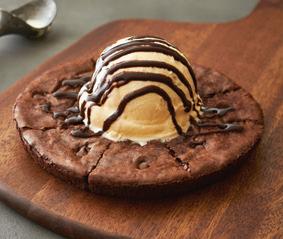


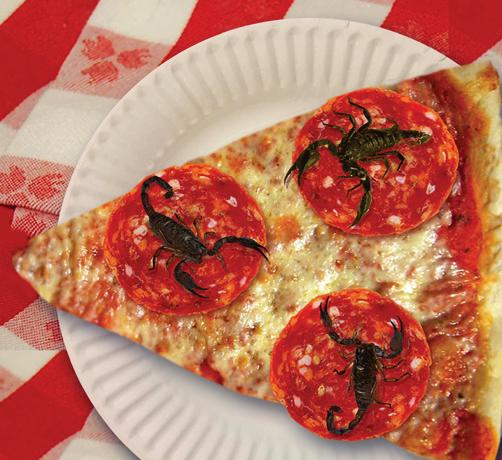

Born in Brooklyn, New York, and now with 12 locations, Emmy Squared continues to open in new markets along the East Coast, while its Detroit-style pizzas are available to ship nationwide via Goldbelly. The Colony2 is one of its signature— and most in-demand—pies across all of those outlets, offering a twist on the classic pepperoni pizza with the addition of pickled jalapeños and a drizzle of honey.

Meanwhile, several of Emmy Squared’s locations offer meat pizzas specific to their markets, paying homage to local dishes. The Nashville Hot Chicken pizza is a white pie topped with Nashville hot chicken, ’Bama White Sauce and chopped pickles, while the Hot Brown Pizza (a favorite in Louisville, Kentucky) is a white pizza topped with turkey, Broadbent bacon, queso and cherry tomatoes. “I feel like, especially with summer burgers on everyone’s mind, burger pizza is something that has momentum right now, too,” adds Emily Hyland, co-founder and partner of Emmy Squared. “We do a deconstructed version of our famous Le Big Matt burger in pizza form—it’s a delicious way to reimagine burger meat. Otherwise, pepperoni is a tried-and-true staple and favorite among our guests. Classics are classics for a reason.”
Hyland also loves meat as an add-on—for example, heaping sausage on the mushroom and truffle cream pizza called the Angel Pie. “It takes the pie to a whole new level,” Hyland notes. “We also often have meat paired with a sweet or spicy flavor profile to amplify flavor. For instance, on the fan-favorite Colony2 pie, we add honey atop the pepperoni, which offers a nice balance to the saltiness of the meat. We also serve a lot of pies that pair spicy flavors with meat, like pepperoni with Calabrian chilies or our yummy Nashville Hot Chicken pizza, which adds dimension to a dish. Often, you will find a creamy element as well—cheddar and sour cream interplay with bacon to make our riff on potato skins in pizza form on the Twice Baked pie.”
 Tracy Morin is PMQ’s senior copy editor and the editor of PizzaVegan.com.
Tracy Morin is PMQ’s senior copy editor and the editor of PizzaVegan.com.
“I feel like, especially with summer burgers on everyone’s mind, burger pizza is something that has momentum right now.”
— EMILY HYLAND, EMMY SQUAREDThe classic pepperoni at Emmy Squared is reworked as the Colony2, jazzed up with hot honey and pickled jalapenos. A pizza topped with a local favorite, hot chicken, is a hot seller at Emmy Squared’s Nashville location. EMMY SQUARED


Digital experts share myriad ways for pizzerias to streamline customers’ ordering from behind the scenes— including targeting them with smart upsells and special offers.
BY TRACY MORINDigital ordering has proven a key facet in the success of pizzerias for many years, and COVID-19 took those already impressive ordering stats to new heights. However, when it comes to working digitally, convenience is the name of the game. Today’s customers expect an online experience that doesn’t just meet their needs—it intuits them. Luckily, your ordering system can work to ensure easier and more personalized sales in a number of ways.
We asked experts from across the marketing and technology worlds to answer some fundamental questions: How can pizzeria owners set up a system that “remembers” users to streamline their ordering experience? And how can that information be used to target them with the best special offers and upsells that align with their previous purchasing behavior? Read on for their top tips.

Russell Parrott, Owner
Russell Parrott & Associates, New York, NY


Any ordering system worth its salt should create a customer profile. That can be done without even knowing a customer name or email—and then every order for that profile should be logged into a database. The easy part for pizzerias is that, generally, a single pizza is made up of various items (and may come in various styles). Think of them as hashtags—each hashtag in an order can and should be logged against a profile.

If a pizzeria knows the “hashtags” for a profile, they should also know what pizzas contain those hashtags. With that information, a simple database query can produce a series of “recommended for you” or “try this” type of suggestions. You could integrate and use some basic AI, but, for the majority of food establishments, that may represent a challenge.
There are so many ways to integrate offers, including coupons, into simple date-and-time-based systems. With digital, the probability is that people will be using a mobile device for your ordering system, which means you can also consider push notifications—either email, actual notifications or even SMS based on location, radius or other criteria (such as a regular customer)—to pop up offers to them. For a nominal cost (about $100 maximum), you could even buy a Bluetooth beacon that can trigger them, but it’s not necessary.
“Any ordering system worth its salt should create a customer profile. That can be done without even knowing a customer name or email—and then every order for that profile should be logged into a database.”
— RUSSELL PARROTT, RUSSELL PARROTT & ASSOCIATESHungry Howie’s utilized digital solutions like a mobile app to better reach and target customers across multiple locations.
Because if your phones and web ordering are down, you may as well send everyone home. We become your phone company and provide a backup Internet connection

Increase revenue and lower cost
• No Busy Signals
• Call Recording
• Call Queuing / Auto-Answering
• Multiple (random) start-of-call upsell messages




• On-hold music/message loops
• Detailed reports—hold times, lost calls etc
• Callerid delivered to POS system
• Auto-attendants—”If you have arrived for curbside pickup press one”
• When your Internet fails our cellular backup router keeps your phones, credit card processing and web orders all working.
• The backup kicks in automatically in seconds. So quickly you will not even drop calls in progress when your primary Internet goes down!
• The same router can be used to create chainwide virtual private network to connect your locations.
• SD-WAN LTE/LTE-A (4G/5G) modems.
experience during these difficult times. Our rapid response support team averaged almost 500 custom changes per week in April-June. As “the rules” changed for our clients, we updated messaging and call flow to minimize impact, maximize revenue. Let PizzaCloud do the same for your stores.
Ask us how we can make your life easier and improve your customer ’
Maintain control, and get the calls off the front counters. For a small chain all you need is a large office at one location. Cut labor hours up to 50% and/or shift labor to lower cost regions while increasing average ticket . Eliminate the constantly ringing phones at the front counters! Tight integration allows calls to overflow to stores, so you can choose when to staff the call center.
The same tight integration, same detailed reports and call recordings in your hands, same ability to overflow back to the stores, but you let some one else hire and manage the staff. We can provide this service to you or work with your existing call center provider.
If you have any interest in call centers call us to discuss options or visit www.pizzacloud.net to register for a webinar.


 Daniel Brian Advertising, Rochester, MI
Daniel Brian Advertising, Rochester, MI
Participating in the digital transformation of several pizza chains, including Hungry Howie’s and Papa John’s, we’ve used the mobile app as a core tactic to improve loyalty and reduce oneand-done customers. The mobile app itself creates an environment for repeat buyers. We can now automate the upsell, introducing salad, combo meals and even brownies for dessert. The average mobile app user spends about 30% more on a pizza order, and research shows they stay 67% more loyal than walk-ins or phone order customers.


It’s all about using big data to build relationships with consumers. If they are already loyal pizza buyers, we can reward them with a discount on their favorite dessert item. If the customer has lapsed, we might need to entice them with a deep discount. These aggressive discounts must be offered to a very narrow audience, or we will cannibalize the current
customer revenue. Therefore, the data drives the discounts with an intelligent approach that will grow both customer volumes and gross revenue.

Our model focuses on hyperlocal digital marketing, where the last click on the mobile app order creates an attribution metric to all of the advertising efforts that created the sale. You can reduce cost-per-acquisition marketing to a science, using big data from mobile phone orders. In fact, the ad campaign is individualized by store and by community, optimizing the message in social media, digital radio and TV, based on the preferences the buyers define for themselves in their mobile apps. So don’t be surprised if the customer orders Chicken Poppers one week and gets a promotion from his local store for Chicken Poppers in Facebook several days later! With new technology, even multilocation pizzerias can individually focus their messaging and targeting to their local communities.
Jessica Ayre, Content Marketing Specialist

Text Request, Chattanooga, TN
With texting software, you can look at customers’ order histories and then send them promotions or coupons for ordering the same thing again. By being able to view each customer’s message history, you can identify their food preferences, interests and ordering trends.
When it comes to upselling or encouraging customers to try new things, you can pitch items that are similar, but don’t deviate too far from their norm. They are more likely to try new things and earn you an upsell if you pay attention to what they like. For example, if a customer typically orders a pepperoni pizza, you can upsell them on a different crust: “Hey, [Name]! Want to upgrade your pan pepperoni pizza to a Neapolitan-style crust? It’s only $3 more!” Customers appreciate being engaged. A texting software can ignite conversations and make the pizza ordering process effortless and transparent.
“The average mobile app user spends about 30% more on a pizza order, and research shows they stay 67% more loyal than walk-ins or phone order customers.”
— DANIEL BRIAN COBB, DANIEL BRIAN ADVERTISINGDANIEL BRIAN ADVERTISING
 Gustavo Melendez, Founder and Lead Technical Architect
Gustavo Melendez, Founder and Lead Technical Architect

Relay, Philadelphia, PA
Creating personalized service means putting customers first and starting with a single source of truth for their data. To provide customers with personalized recommendations, you need to create a single customer profile. With customer relationship management (CRM) technology, such as Salesforce, you can integrate it with POS and rewards management systems to recommend commonly ordered items or present them with new options for their next visit.
Powerful CRMs can introduce AI-driven recommendations that can help customize orders and suggest add-ons through the ordering process. Using tools like Einstein Prediction Builder, you can apply machine-learning principles without being a data scientist—helping your customers try new menu items they’ll love or upsell using AI-driven recommendations.

When you combine customer data into thoughtfully designed customer profiles, you can more effectively segment and market to them with privacy-conscious email marketing. When you combine CRM with restaurant point of sales and management systems, you’ll be able to send email, text and app notifications that increase customer loyalty and raise sales.
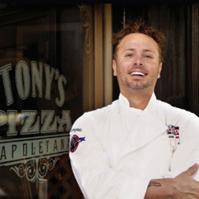 Tracy Morin is PMQ’s senior copy editor and the editor of PizzaVegan.com.
Tracy Morin is PMQ’s senior copy editor and the editor of PizzaVegan.com.
“When it comes to upselling or encouraging customers to try new things, you can pitch items that are similar, but don’t deviate too far from their norm.”
— JESSICA AYRE, TEXT REQUEST

PMQ.com/dough-information-center
Choosing the right mixer will probably come down to how many pizzas you plan to make on a weekly basis.
A divider/rounder probably isn’t necessary for a smaller pizza operation, but for high-volume stores, it can be a real time-saver.
Since sheeters tend to toughen the dough (through gluten development), you might end up getting some snap-back, so try using dough relaxers like L-cysteine or glutathione.
For newcomers to the pizza business or smaller operations looking to expand, here’s a look at the musthave dough equipment for your kitchen.
 BY RICK HYNUM
BY RICK HYNUM
Every farmer needs a tractor. Every cowboy needs a horse. And every pizzeria operator needs a dough mixer. But that’s just one of the many tools it takes to build out a pizza kitchen. Making a lot of dough—and managing it efficiently—on a daily basis requires a plethora of equipment, f rom presses and sheeters to rounders, dividers and dough boxes. If you’re a high-volume pizzeria operator, you already have most of this equipment in place, but for smaller stores looking to expand or newcomers to the business with big, bold plans, it’s helpful to create a checklist and to understand why each piece is important. Based on decades of input from dough experts, including the late, great Tom “The Dough Doctor” Lehmann and PMQ test chef Brian Hernandez, we’ve put that list together for you!
This one is the biggie and merits careful consideration. Mixers come in several styles and load capacities ranging between 15 and 300 pounds. Choosing the right mixer will probably come down to how many pizzas you plan to make on a weekly basis.
Most pizza operations use either a planetary mixer or a spiral mixer. Planetary mixers are commonly found in restaurant kitchens because they’re so versatile and can accommodate a range of attachments that can be used for shredding, slicing and grinding in addition to simple mixing. As for mixing dough, both planetary and spiral mixers have a mixing hook, but each works differently. In the case of a planetary mixer, the hook moves around the bowl, whereas the spiral mixer’s hook doesn’t budge—instead, the bowl moves around the hook. The advantage to the latter is that its gentle mixing action creates less friction and heat, and too much heat can cause problems with your dough. The disadvantage of a spiral mixer, however, is that it has only one purpose: mixing
dough. Spiral mixers also tend to cost more than planetary mixers and can be harder to clean, because the bowl typically can’t be removed.
The upshot: If mixing dough is all you’re worried about, a spiral mixer is more than up to the task. Most can handle dough sizes from as little as 25% of rated capacity to 125% of rated capacity, although exceeding rated capacity is not recommended. If you need a mixer that can do a lot more—such as shredding cheese or cutting veggies—a planetary mixer with attachments might be a better choice for your operation. Planetary mixers are also better for mixing very high-absorption dough (70% absorption and higher) as well as for dough with short mixing times (think cracker-crust pizza).

Meanwhile, don’t forget about vertical cutter mixers (VCMs). Equipped with at least two blades (typically sharp and dull), a VCM can mix dough as quickly as 45 seconds and can also be used for making sauces, shredding cheese and cutting vegetables. Like a planetary mixer, it’s highly versatile, but it can also be tough on your dough.


A hot press uses a heated head to press your dough ball into a die cavity or onto a flat platen. It can create a variety of shapes, including round and rectangular crusts. But you’ll likely need to add some kind of relaxing agent to your dough formula so the dough can stretch, and to reduce shrinkage (or dough memory) after pressing your dough. Keep in mind that the heated platen will activate your yeast to some extent. If you’re making dough for a thin-crust pie, you’ll want to pop it into the oven immediately after it’s pressed. On the other hand, the heated dough offers an advantage when you’re making thick-crust or deepdish pies, because it reduces the rising/proofing time needed to impart the desired finished-crust characteristics.

Cold presses don’t rely on heat to help form the crust. But with a cold press, you’ll need a soft, flowing dough, achieved through a high water-absorption process, a high finished-dough temperature (90° to 100°) and reducing agents. When you’re working with soft dough, keep in mind that it’s harder to get a well-defined, raised edge for your crust. You’ll also need special pans on which to press the dough. On the other hand, cold pressing is great for focaccia bread or for developing a fried-bottom crust.
Dough sheeters and rollers are useful in producing mass quantities of dough, such as for a commissary. Sheeters and rollers form your dough balls into flattened dough skins. With larger sheeters, you can even create long ribbons of dough and cut them into individual skins using a circular cutting die.
The roller on your dough sheeter tends to force gas out of your dough along the way, producing a tougher dough with a thick, heavy internal cell structure. For a more porous cellular structure, allow the dough to proof/rise for 20 to 70 minutes between the forming and baking stages. Since sheeters tend to toughen the dough (through gluten development), you might end up getting some snap-back, so try using dough relaxers like L-cysteine, glutathione, deodorized vegetable powder or sodium metabisulfite. Dough sheeters are ideal for creating a traditional crispy-crust pizza and deliver even, consistent results. You should also be able to adjust your dough sheeter for different types of non-pizza dough, such as ciabatta bread.
A divider/rounder probably isn’t necessary for a smaller pizza operation, but for high-volume stores, it can be a real time-saver. You can purchase each piece separately or in a single unit. The divider cuts dough into equal sizes, while the rounder does exactly what its name implies: it rolls the dough into nice, round dough balls.
You can choose between manual and electric dividers. The manual machine lets you insert cutter/portioner plates and blades, based on the desired dough portion. Electric dividers can be programmed to cut the dough based on the portion you’re looking for and are most commonly used in combination with rounders.

For some operations, a rounder might be all you need. A staff member at the bench can manually divide an 80-pound dough into 10-ounce dough pieces in about 15 minutes. Each piece can be tossed into the rounder, and another worker can catch the dough balls as they come out of the rounder. With practice, two people can divide, round and box an entire 80-pound dough batch within 20 minutes.


Once you’ve got your dough balls formed, storage is the next big concern. Dough boxes have long been the industry standard for this stage of the dough management process. Available in varying heights for different dough ball sizes and weights, they also come in different colors for different days of the week or for different types of dough. When properly cross-stacked in the cooler,
the dough balls can be uniformly cooled to internal temperatures between 50˚ and 55˚F. You can also use them to transport dough from one location to another if needed. But they’ll need to be cleaned regularly. Plastic dough scrapers are helpful for fast, easy cleaning of plastic boxes, but don’t use a metal scraper or you might gouge the surface of the box, making it harder to remove the dough balls and to keep the boxes clean.


Pizza peels are available in metal, aluminum and wood/composite materials. You’ll want to use your wood/composite peel for building your pie and transferring it to the oven, while a more heat-resistant metal peel should be used for moving the pie around in the oven and pulling it out. Steel pizza peels clean easily and can be durable and impact-resistant. Aluminum peels are also durable while lighter in weight and more maneuverable. Peels come in various shapes and sizes for different types of pizza. A rectangular peel is usually a safe choice. For wood-fired ovens, look for a peel with a perforated metal surface, which allows the flour to shake off from the bottom.
Finally, don’t forget the little things. You’ll need:
• A stem thermometer for measuring the temperature of your water and your dough.
• Time is a critical factor in dough management as well as working with other ingredients, so a timer is also a must-have piece of equipment.
• A high-quality scale to weigh your dough balls

• A proofer/warmer to hold your dough at a warmer temperature and aid in the proofing process
• A dough cutter to slice your pizza. These come in several varieties, including the traditional wheel blade, rocker blade (for Detroit-style pizza) or scissors (for Roman-style pizza).

• A dough docker to release gas from the dough and control bubbling. Typically, it only takes one or two passes with a dough docker to manage bubbling. (Learn more about this tool at PMQ.com/dough-docking.)
• A bubble popper to pop unwanted bubbles while the pie bakes in the oven.
Rick Hynum is PMQ’s editor in chief.




A marketing pro offers seven ideas on how to develop engaging, easy-to-create content for the No. 2 website in the world.
BY KRISTIN DYAKSince its founding in February 2005, YouTube has grown from a fledgling video sharing platform for web-savvy individuals to the second highes t-trafficked website in the world—one that nearly everyone has heard of and billions of pizza lovers visit each month.

In fact, YouTube is now the most popular online platform in America, attracting more than two billion logged-in monthly users, according to the Pew Research Center. And its growth shows no signs of stopping, given its incredible popularity with users of all ages. The platform is popular with tweens and teens, and a whopping 90% of 18- to 24-year-olds say they use it. But, unlike many social platforms, it is highly trafficked by older age groups as well, including 73% of Americans aged 36 to 45, 70% of those aged 46 to 55, and 67% of those aged 56 and older.
These are definitely what you’d call “heavy users.” Hootsuite data reports that people watch more than a billion total hours of the platform’s content each day, and it’s no secret that many Generation Z members and millennials view YouTube as an essential streaming option—something that plays the role of TV in their daily lives and has helped make “cutting the cord” (abandoning traditional TV) possible.
With all of this in mind, it’s clear that YouTube offers owners and operators of pizza restaurants, both big and small, a tremendous opportunity to raise their restaurant’s visibility among and market their products to current and prospective customers of all ages—all for the very affordable price of zero dollars!
Here are seven ideas for easy-to-create, engaging content that will resonate with your pizzeria’s audience:

What better way to promote your pizza restaurant than by telling your audience the story of how your business came to be? Whether this consists of a slideshow of photos from building the restaurant, a sit-down story of the owner talking about their experience, or both, this content allows you to connect with your community and foster a friendly, personal feel. Plus, it will help your restaurant meet one of the primary goals of all businesses: building brand affinity and creating lasting relationships with your customers.
Highlighting the delicious items on your menu is an ideal way to show both current and new customers what they will experience if they choose your restaurant, whether for dine-in, takeout or delivery. A picture really is worth a thousand words when it comes to food, and there’s no end to how many visuals you can offer—images and videos of not only the final product but also the fresh ingredients that go into them. You can even make the content more personal by having your chef describe his or her favorite items, and, as an added business bonus, this can enhance your efficiency.

Spotlighting your staff is a surefire way to introduce your pizza restaurant to a larger audience and form a more personal relationship with customers. People want to feel connected to the places that they support with their dollars, and seeing and learning about who works there helps do just that. An upscale, artisan pizza restaurant, for example, might create a sit-down segment introducing the chefs and waitstaff in a formal setting, whereas a fast-casual restaurant might reflect its overall vibe through a video featuring employees accompanied by upbeat music and fun transitions. No matter how you choose to style it, giving your workers a voice not only elevates the rapport between your staff members, but also gives your target audience a window into the world of your restaurant.
Because your surrounding neighborhood is an essential part of your restaurant’s target audience, creating a video tour of your pizzeria can be a great way to connect with it. Audiences may recognize certain features and become instantly familiar with your location, which can elevate traffic to your business. Also, because ambience is a major factor in restaurant choice, it’s important to highlight enticing components, such as lighting, seating and comfort. Remember, every neighborhood needs a go-to pizza place, and this YouTube content can help convince your community that it should be yours!

Holidays and special events—such as Valentine’s Day, St. Patrick’s Day, National Pizza Day, National Cheese
Day and others—open the door for producing engaging, creative content. Whether your restaurant offers a heartshaped pizza, a two-for-one deal or a gift card campaign, there’s no limit to how many seasonal specials you can promote via video. As we all know, there’s nothing better than a video of mouthwatering pizza set to the sound of “Jingle Bells”!
Making pizza is often a fun, interactive way to bring family and friends together. With this in mind, rounding up your chefs and creating a cooking demonstration that shows your audience how to make the perfect pizza from home—ideally with your ingredients or make-at-home kit— can make great content.
More and more customers care about and prioritize where their food comes from when making purchasing decisions, so showing that you not only use great ingredients but also support your local community is a powerful thing. You can easily take your YouTube audience on a vlog-style shopping trip to a local farmer’s market, showing them all the good stuff that goes into—and on top of—their pizza.
This list could go on and on, but with content creation at your (or your marketing firm’s) fingertips, there’s no doubt that you’ll soon be coming up with more ideas than you know what to do with and posting like a pro, especially after you start seeing your video views—and your pizza sales—go up!
Kristin Dyak is digital marketing director at The Cyphers Agency, an independent, fullservice creative agency offering advertising, public relations and digital services to diverse regional and national clients. To learn more, visit thecyphersagency.com.
More recipes available on PizzaVegan.com!


Recipe provided by Deborah Leader, VeganVigilanteBlog.com
INGREDIENTS:
Pizza Crust
• 2 c. 100% whole-wheat flour, sifted
• 11/2 tsp. active dry yeast
• 1 tsp. vegan sugar
Sauce
• 2 c. cashews, soaked overnight in water
• 2 tbsp. extra-virgin olive oil
• 1 tsp. sea salt
• 3 cloves garlic
Toppings
• 1 tbsp. + 1 tsp. extra-virgin olive oil, divided, to brush on crust and caramelize onions
• ½ c. onion, sliced lengthwise
• 1 tsp. coconut sugar
DIRECTIONS:
• 1 tsp. sea salt
• 2 tbsp. extra-virgin olive oil
• ¾ c. + 3 tbsp. warm water
• ⅔ c. low-sodium vegetable broth
• 2 tbsp. fresh basil, coarsely chopped
• ½ c. sliced pineapple rounds
• 1 jalapeño, sliced
• 3-4 tbsp. plum sauce
• 1 tbsp. vegan Parmesan
• Vegan mozzarella, as needed
for several minutes to blend the ingredients together. Add broth a little at a time and pulse until the sauce is creamy, resembling pizza sauce. Set aside.
In the large mixing bowl of your stand mixer, whisk together water, sugar and yeast. Let sit for 5 minutes, until a foamy layer forms on top. With a bread dough hook attached to your stand mixer, add flour and sea salt and mix on low until the ingredients start coming together. Add olive oil and continue to mix, scraping the sides with a spatula as needed. Once the ingredients are well-incorporated, knead the dough for 3 to 5 minutes. Press the dough into a ball and place in a lightly oiled bowl. Allow the dough to rise for about 1 hour or until the ball has doubled in size. For the sauce, combine soaked cashews, olive oil, sea salt, garlic and basil in a food processor. Pulse on high
Add ½ tsp. olive oil to a small skillet. Over low heat, sauté the onions until they start to brown. Add the coconut sugar and continue to sauté, stirring occasionally, until the onions are soft and dark brown.
Lightly oil and flour a nonstick pizza pan. Pound the dough with your fist several times to flatten the dough. Place in the middle of the pizza pan and press gently toward the edges of the pan, forming a ridge at the edges for the crust. Brush a thin layer of olive oil over the crust. Spread the garlic-basil sauce evenly with a large spoon. Sprinkle vegan mozzarella over the top. Add pineapple, jalapeño and caramelized onion. Bake at 400° for 15 to 20 minutes or until the crust is golden-brown. After cooling, drizzle with plum sauce and sprinkle with vegan Parmesan.

This international virtual event brought spinners from across the globe to compete for the title of Best Spinner in the World, but in the end, there can be only one...

2nd PlaceNathan Wilson, Six Hundred Downtown, Bellefontaine, OH
3rd PlaceMichael Testa, Jersey Pizza Boys, Avenel, NJ



 1st Place - Juan Hermosillo, La Pizza Voladora, Coyoacán, Mexico
1st Place - Juan Hermosillo, La Pizza Voladora, Coyoacán, Mexico




DOUGH BOXES
PROOFING BOARDS
» Designed for use with standard proofing racks
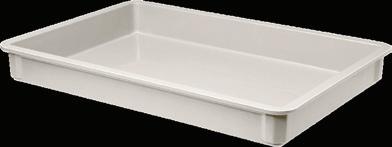

» Lightly textured surface


» Can withstand temps -60o to 250oF
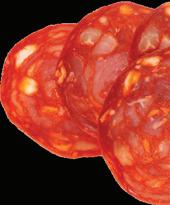
» Safely holds heavy loads with no bending or sagging
DOUGH BOXES

» Fiberglass strength and durability outlasts plastic




» Color matching available
» Secure stacking with no bending or sagging
» Easily cleaned in any standard or commercial high-temp washer
» Snap-on lids and dollies available
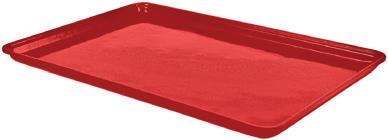
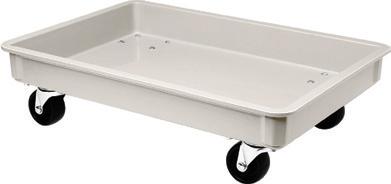
SUPREME & MARKET TRAYS
» Resists scratching & shipping
» Smooth, sanitary surface
» Won’t bend or sag
» Many colors & sizes available







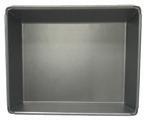






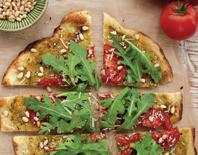



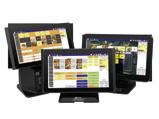






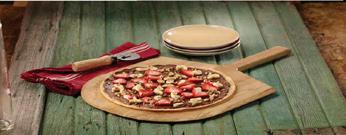
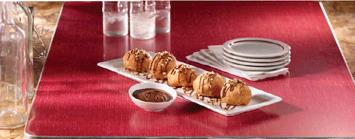
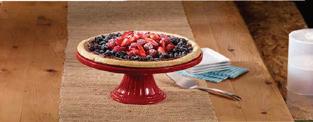
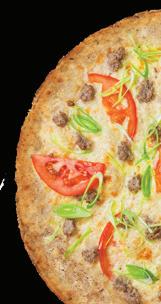
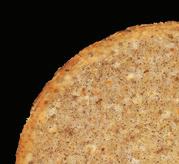








proof below and sign-off on the advertisement as shown or indicate changes in the column. Please return this signed proof to Stacie Dennison at either:

MANY IMITATE. NONE CAN DUPLICATE • Fiberglass strength & durability outlast plastic trays












DOUGH TRAYS/PROOFING TRAYS











durable and airtight. engineered to fit. 908-276-8484.............. www.doughmate.com









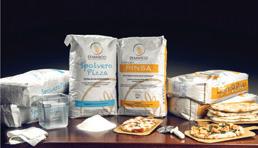
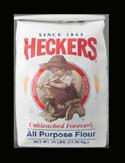

durable and airtight.










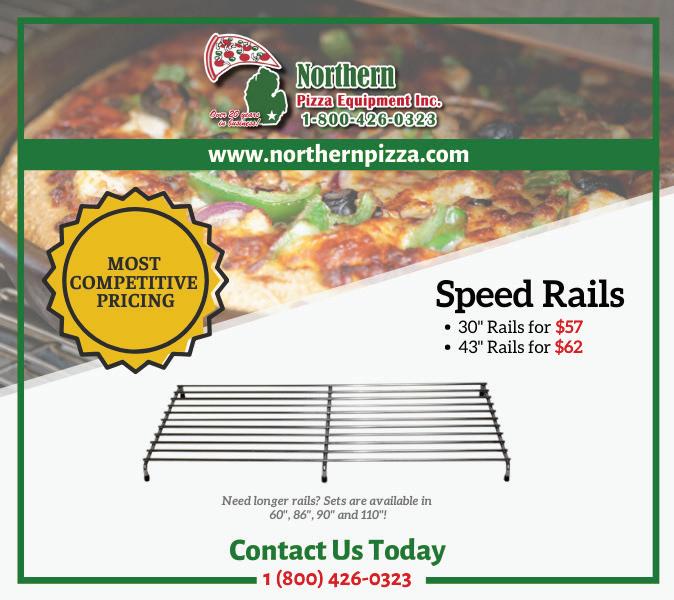








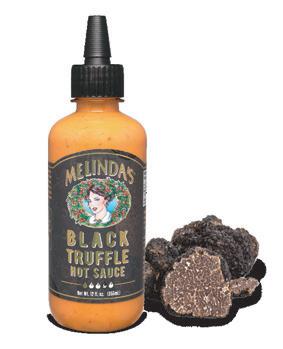
SP62P
• Heavy-duty, 60 qt. capacity
• Direct gear drive transmission
• Standard #12 attachment hub
• 2-year parts & labor warranty


• PERFORMANCE • VALUE 800-347-5423 • globefoodequip.com



QUALITY
Best Choice Among Brand Name Mixers in the Market. HIGH QUALITY at a REASONABLE PRICE High Quality spiral and Planetary Mixers, Bread Slicers, Dough Sheeters, Meat Grinders, Dough Dividers/Rounders, Rotary Ovens and More! Only Thunderbird can offer up to 7 YEARS extended WARRANTY!!!

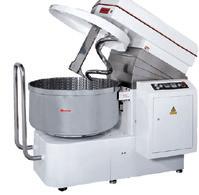

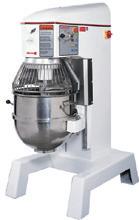
THUNDERBIRD FOOD MACHINERY, INC. THUNDERBIRD FOOD MACHINERY, INC. (PIZZA HUT OFFICAL VENDOR)



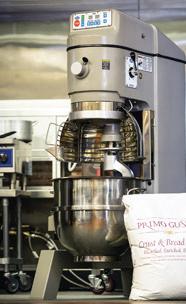
4602 Brass Way, Dallas, TX 75236
TEL: 214-331-3000; 866-7MIXERS; 866-875-6868; 866-451-1668
FAX: 214-331-3581; 972-274-5053

WEBSITE: www.thunderbirdfm.com; www.thunderbirdfm.net
PO Box 4768, Blaine, WA 98231
TEL: 360-366-0997; 360-366-9328
FAX: 360-366-0998;


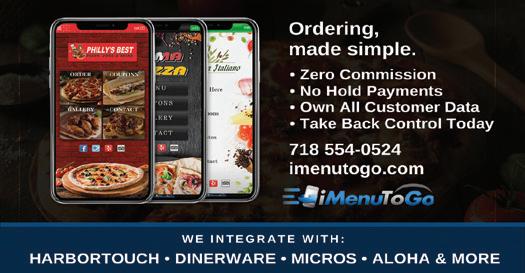

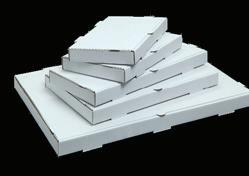

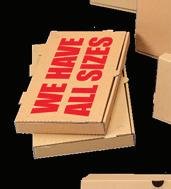




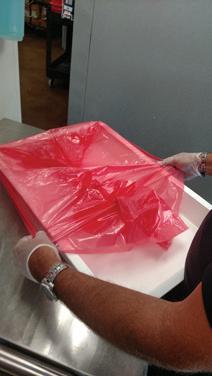







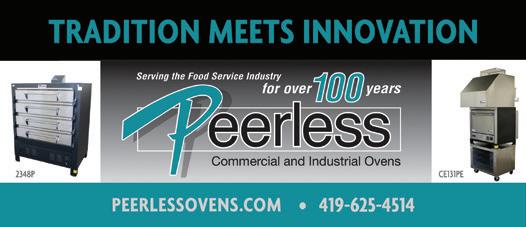
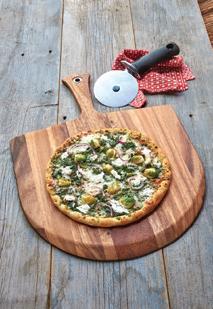


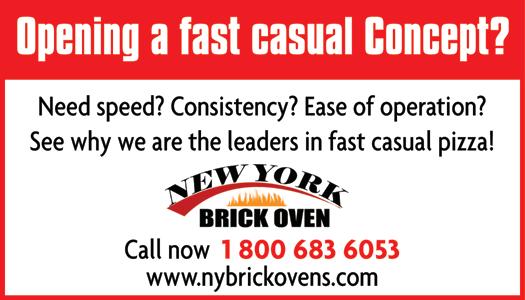

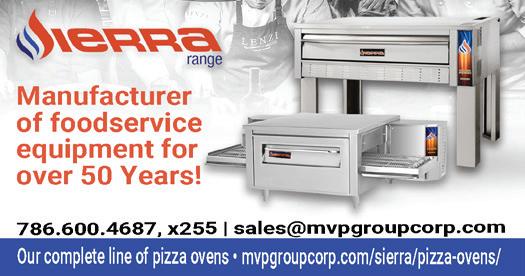






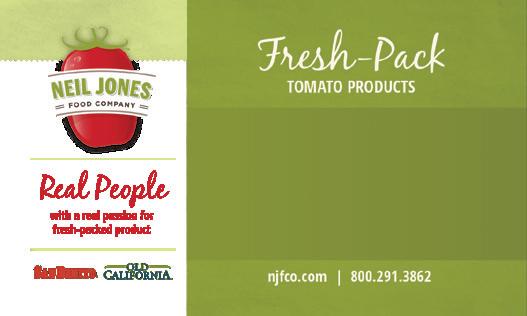

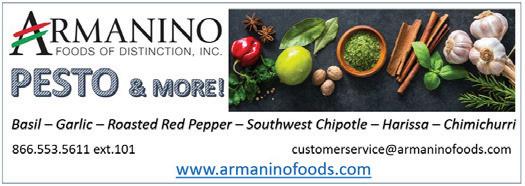

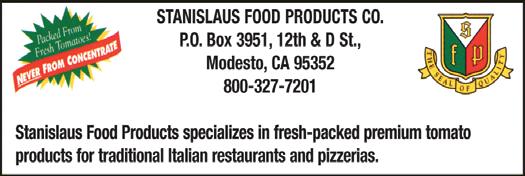


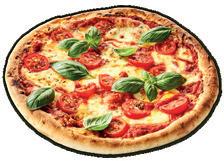




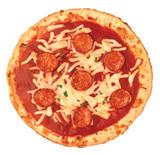




For Ledo Pizza founder Bob Beall, ignorance was bliss. In fact, some of his earliest “errors” helped create the blueprint for what’s now known as the Maryland-style pie.

As a tobacco farmer and liquor inspector, Bob Beall didn’t know much about the pizza biz when he started out with partner Tommy Marcus, but he already had a businessman’s eye for enterprise. In his inspector job, he was privy to restaurants’ financial books and wanted in on this moneymaker. “He educated himself, so there was a lot of trial and error, but that made us who we are today,” recounts Jamie Beall, Bob’s grandson and current president and CEO of Ledo Pizza. “We had square pizza instead of round, provolone versus mozzarella, and a very thick-cut pepperoni. Our style came from not knowing any better.”

Still, when the pair opened Ledo Pizza in 1955 in Adelphi, Maryland, Bob’s job experience paid off. He chose a site next to the University of Maryland and bordering a dry county—meaning customers would flock to the pizzeria to down some booze with their meals. He was also a natural promoter, giving away a toaster (a then-novel gadget) to attract attention. Finally, as a minor-league baseball pitcher, Bob counted many big-name sports friends; soon, customers were visiting to spot guests like Mickey Mantle and Yogi Berra. “That really put us on the map,” Jamie notes. “A who’s who came into the restaurant, and it was a staple for the university.” Ultimately, Ledo’s unique recipe—square with a thin, pastry-style crust, a sweeter sauce, and salty smoked provolone on top—helped form the Maryland pizza style.
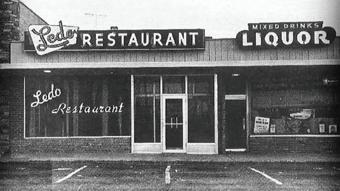

 BY TRACY MORIN
BY TRACY MORIN
When Bob’s son, Bobby, came into the business in the mid-’80s, he eyed licensing and franchising. With Bob’s blessing, he toyed with several concepts, from sit-down dine-ins to carryout-type locations. The business grew organically, pushing out to a larger radius with three to five new units per year, on average. “They taught the recipes and business—what Ledo is all about,” Jamie explains. “We have good food at a fair price, in a family atmosphere. But, most importantly, we try to make our operations part of the community.”
Jamie started working at the pizzeria in 1985 and assumed operations in 1998, with his three brothers as largely silent but involved partners. He brought the business into modern times with a POS system and, eventually, social media and online ordering, which only recently soared from 3% to 35% of total sales (and that’s without offering delivery). Today, the Annapolis-based business counts more than 110 locations in its network— and growing. “We always make sure our current locations are healthy before we add more,” Jamie says. “We try to keep a fun, fresh menu, experimenting with culinary trends. But our heart and soul is pizza.”

